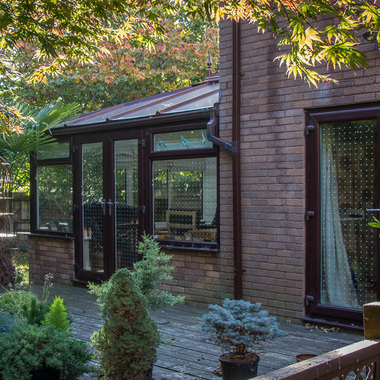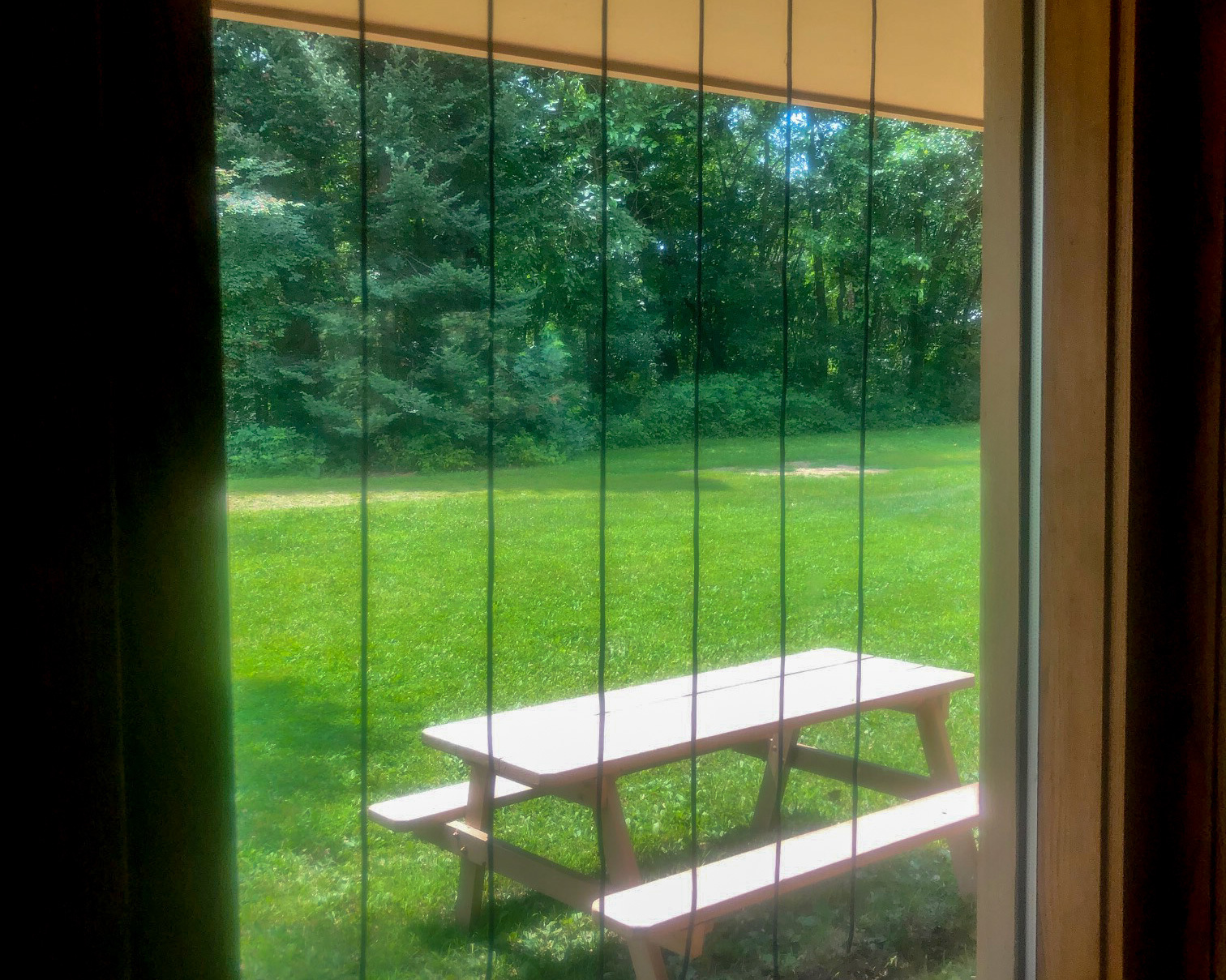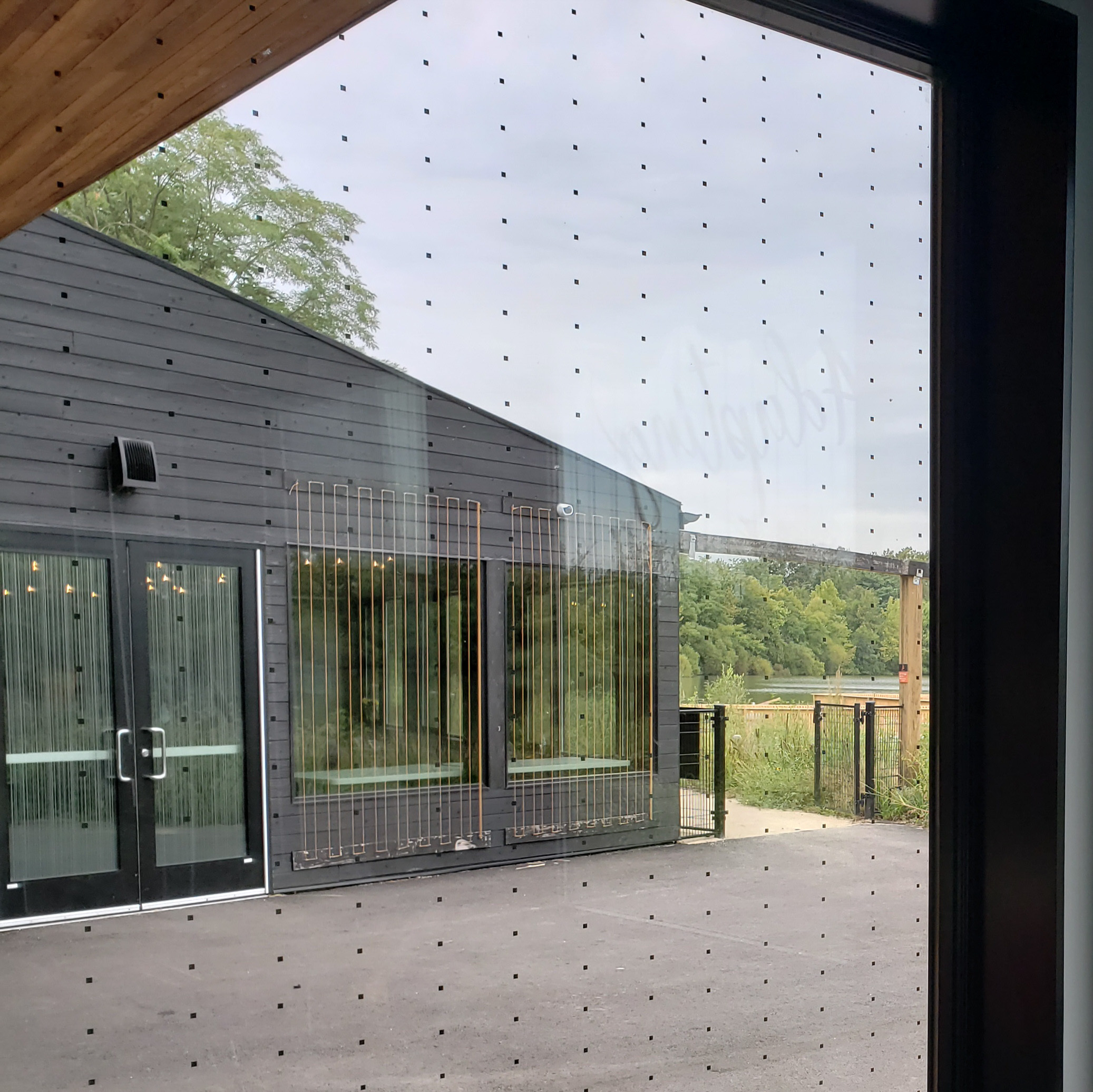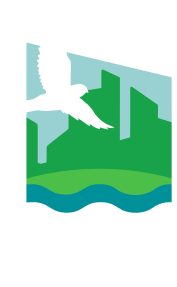
Applying Feather Friendly® adhesive dot patterns is one of many ways to make your windows bird-friendly. Photo: Bird Friendly®
Make Your Windows Bird Friendly
Nearly one billion birds are injured or killed by collisions with glass every year in the U.S. Through our bird-friendly advocacy and building design courses, we hope to reduce that number significantly in New York City.
American Bird Conservancy found that every U.S. home kills about two birds each year. Collisions often occur where vegetation is reflected in windows, where vegetation is behind glass, or at glass walkways and building corners, and where birds can see through glass to habitat on the other side. In order to prevent collisions, glass must be made visible to birds using markings on glass or barriers in front of glass that birds can see.
When implementing bird-safe window solutions, it is important to follow these guidelines:
- Not all windows are equally hazardous. Look at your windows from different angles and during different times of day to see what areas seem to reflect habitat or show a clear view to what may look like habitat inside your home. If you have collisions, document where they occur so you can prioritize fixing those windows first.
- Patterns should be applied to the outside of the glass. If products are applied to the interior, they will be obscured by reflections in the glass and become ineffective.
- Birds are small and agile, meaning they can fly in very small spaces. This means any patterns meant to deter birds should be close enough together so that they don’t think they can fit in between the spaces. The “golden rule” for spacing is two inches apart horizontally and two inches apart vertically.
- Decals or paint should be high contrast in order to be visible to birds. Research shows that white stripes tend to work well.
Window Solutions Proven to Deter Bird Collisions
You can help make your own home or office more bird-friendly by treating glass where collisions happen with one of these at-home solutions. Visit American Bird Conservancy’s Bird-Smart Glass site for a comprehensive list of products tested by the organization. Every situation is unique and may require different solutions. It is best to test an option first to see what works best for you.

Blue Jay viewed behind screened window. Photo: NYC Bird Alliance
Use window screens:
Exterior window screens obscure reflections and provide a visual barrier for birds.
Exterior window screens obscure reflections and provide a visual barrier for birds.

Creating mural decorations on your windows is a fun way to deter bird collisions! Photo: American Bird Conservancy
Paint your windows:
Tempera paint is inexpensive and long-lasting. Showcase your art on your windows and prevent collisions at the same time!
Tempera paint is inexpensive and long-lasting. Showcase your art on your windows and prevent collisions at the same time!

Parachute cord spread four inches apart on window. Photo: Acopian Bird Savers
Install parachute cord:
Hang parachute cord spaced four inches apart on the outside of your window. Acopian BirdSavers offers premade options and DIY instructions.
Hang parachute cord spaced four inches apart on the outside of your window. Acopian BirdSavers offers premade options and DIY instructions.

Feather Friendly® adhesive dot pattern. Photo: Feather Friendly
Apply window decals and film:
There are endless options for film and appliques that can be applied to the exterior of your windows to prevent collisions. Solyx® makes a striped pattern film, and Feather Friendly® makes an adhesive dot pattern. CollidEscape tapes can be cut and applied in a custom pattern of your own creation. Remember the “two by two” rule when applying decals or tapes.
Looking to retrofit your building’s windows with bird-safe film? Visit our Make Your Building Bird-Safe page or email birdsafe@nycbirdalliance.org to request a free consultation from our conservation team on ways you can make your building safer for birds.
There are endless options for film and appliques that can be applied to the exterior of your windows to prevent collisions. Solyx® makes a striped pattern film, and Feather Friendly® makes an adhesive dot pattern. CollidEscape tapes can be cut and applied in a custom pattern of your own creation. Remember the “two by two” rule when applying decals or tapes.
Looking to retrofit your building’s windows with bird-safe film? Visit our Make Your Building Bird-Safe page or email birdsafe@nycbirdalliance.org to request a free consultation from our conservation team on ways you can make your building safer for birds.
What Doesn't Work?
Unfortunately, some highly-touted options have been proven to be ineffective in deterring bird collisions. The following “solutions” are to be avoided.
- Drawing the curtains or blinds: While this can sometimes be an effective solution if the problem is that birds are attempting to fly to habitat behind glass, when the issue is reflective glass, blinds or windows often will not help and can sometimes even make it worse. If you’re unsure, put down blinds or curtains and view your window from several perspectives and at different times of day to see what your window looks like to a bird.
- Hawk silhouettes: Birds will not be deterred by fear from a hawk silhouette sticker, or any single sticker in the middle of a window. If you already have a hawk sticker, try cutting it up and placing the pieces two inches by two inches apart across the entire window.
- Noise deterrent: Distress calls and birds of prey calls have not been shown to deter collisions. Birds quickly habituate to these sounds.
To Learn More
Visit American Bird Conservancy’s Bird-Smart Glass site.


